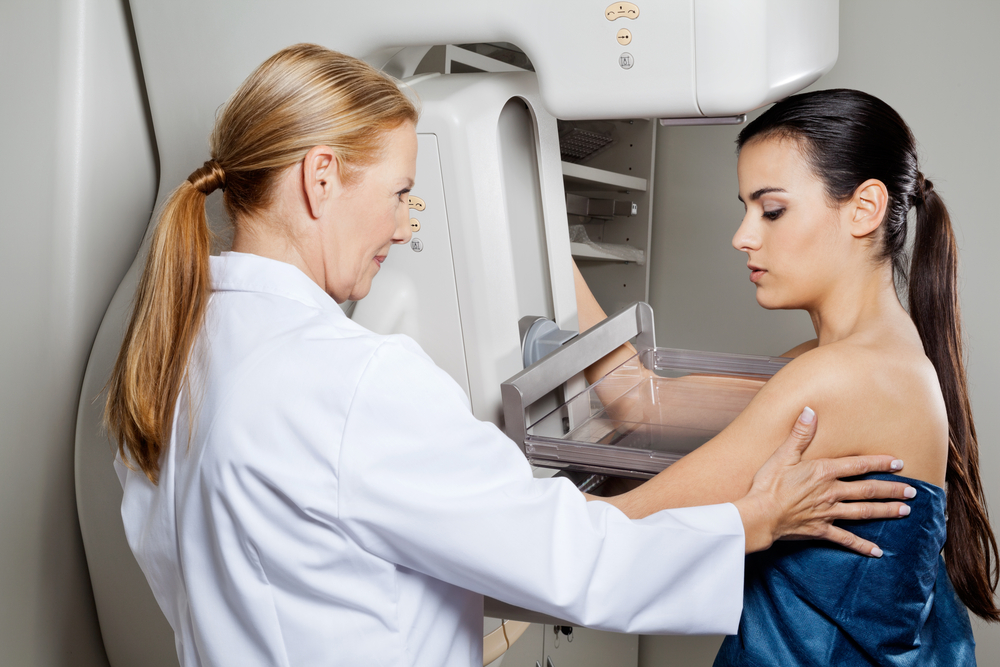Breast Cancer: The First Sign Isn't Always a Lump

Around 1 in 6 women eventually diagnosed with breast cancer initially go to their doctors with a symptom other than a lump, according to a new study conducted in England.
Women who have a symptom of breast cancer other than lumps are also more likely to wait to see a doctor, compared with women who do have lumps, the researchers found. That might put them at risk of worse outcomes if the cancer isn't caught quickly.
"It's crucial that women are aware that a lump is not the only symptom of breast cancer," study leader Monica Koo, a doctoral candidate at University College London, said in a statement. "If they are worried about any breast symptoms, the best thing to do is to get it checked by a doctor as soon as possible."
Breast cancer symptoms
Koo and her colleagues used data from the English National Audit of Cancer Diagnosis in Primary Care involving about 2,300 women who were diagnosed with breast cancer between 2009 and 2010. They classified each patient by the symptoms that brought her to the doctor, which could include more than one. In total, 83 percent of these women had a breast lump, the most well-known symptom of breast cancer. Seven percent had nipple abnormalities, 6 percent had breast pain, 2 percent had breast skin abnormalities and 1 percent had breast ulceration. Less than 1 percent each had abnormalities of the contour of the breast or breast infections. [6 Foods That May Affect Breast Cancer Risk]
A small number of women also reported symptoms that weren't related to the breast itself. One percent had a lump in the armpit, 1 percent experienced back pain and less than 1 percent experienced muscle pain or breathlessness.
The researchers then grouped the patients together by symptom clusters. The vast majority of the women fell into one of four groups: The researchers found that 76 percent of all the women had a breast lump as their only symptom, and 11 percent had a breast symptom that was not a lump as their only symptom, and 5 percent had only a non-breast symptom.
Six percent had a breast lump as well as at least one additional breast symptom.
Sign up for the Live Science daily newsletter now
Get the world’s most fascinating discoveries delivered straight to your inbox.
Getting care
The researchers then looked at how long it took the women to get to the doctor after their symptoms started. They focused on those who waited more than 90 days, because a three-month delay in seeking a diagnosis is linked to lower five-year survival rates. They found that although only 7 percent of women with a breast lump waited that long, 15 percent of women with symptoms other than a lump, and 20 percent of women with both a lump and other types of symptoms, waited 90 days. [Wonder Woman: 10 Interesting Facts About the Female Body]
"This research shows that, all too often, women are delaying going to their doctor with symptoms of breast cancer," Karen Kennedy, director of the National Cancer Research Institute (NCRI) in the U.K., said in a statement. "This could be because people are simply unaware that breast cancer can present in many different ways, not just through the presence of a lump. With a disease like breast cancer, it's essential to be diagnosed as early as possible so that a treatment plan can be developed and started. Awareness campaigns need to raise awareness of all of the potential symptoms of breast cancer so that people know how to spot the signs and when to go to a doctor."
Koo presented her work this week at the NCRI Cancer conference in Liverpool, England.
Original article on Live Science.

Stephanie Pappas is a contributing writer for Live Science, covering topics ranging from geoscience to archaeology to the human brain and behavior. She was previously a senior writer for Live Science but is now a freelancer based in Denver, Colorado, and regularly contributes to Scientific American and The Monitor, the monthly magazine of the American Psychological Association. Stephanie received a bachelor's degree in psychology from the University of South Carolina and a graduate certificate in science communication from the University of California, Santa Cruz.










